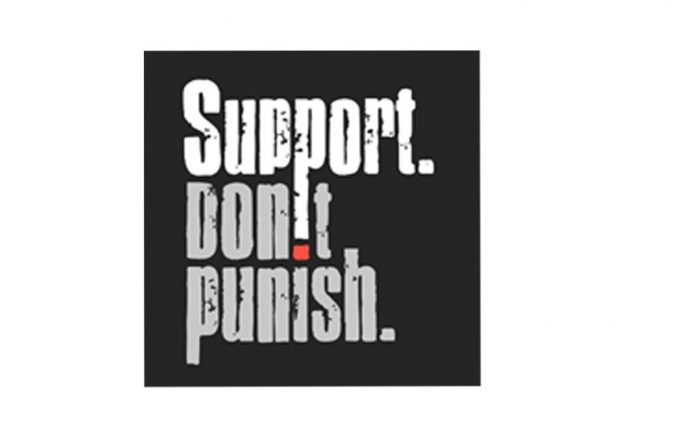Myanmar will hold its next general election on November 8, 2020. More than a 1,000 national, state and regional seats are up for grabs.
According to the Union Election Commission, 78 political parties are campaigning nationwide, while 18 political parties are focusing their campaigns in specific regions or States.
The National League for Democracy (NLD) and ethnic political parties have been introducing their platforms to the electorate over the last few months.
Key issues for all parties have included an articulation of their positions on the peace process, federal affairs, economy, health and education. However, there has been little policy substance coming from any of the parties regarding prevention, eradication, illegal drug use or drug trafficking. Virtually none have commented about the importance of harm reduction being central to good policy.
Given the magnitude of the issue across the country, this is a concern.
Current situation at a glance
Myanmar continues to face significant drug related problems. Official data shows that there are an estimated 93,000 PWID (People Who Inject Drugs) and HIV is prevalent (35%) amongst drug users (Source: IBBS-PWID 2017-18).
In some townships within Kachin State, HIV prevalence is more than 60%.
Other infections such as Hepatitis C are also commonly found among the PWID population with a national prevalence of 56%.

ATS (Amphetamine-type stimulants) use is also growing in both urban and rural areas.
Existing drug treatment and harm reduction services mainly focus on those who are using opioids and HIV. Drug treatment programs for stimulant users are limited.
Community members’ perspectives on drug issues in Myanmar is still negative. Not surprisingly, policy positions marginalize and penalize drug users, which leads to abuse, discrimination and incarceration.
However, there is a small but growing awareness amongst officials and parliamentarians that drug use should be treated as a health issue rather than a criminal one. This was evident in a 2018 bill to amend the 1993 drug law to exempt possession of drugs for personal use from prison penalties.
However, the proposed exemption was defeated, indicating that there is need for greater advocacy and campaigning to change public attitudes, and for decision makers to better understand the cost effectiveness of viewing drug abuse as a health crisis, rather than a criminal issue.
It is also important to monitor the implementation of the recently amended drug law against the needs of affected communities and international guidelines and practices that seek to reduce harm connected with drug abuse.
The general public has much to understand about the issue, and learning from the voices of youth and drug users is instrumental in that process.
In February 2018, Myanmar launched a new national drug control policy after years of careful planning. The new National Drug Control Policy is more comprehensive and focuses on supply and harm reduction measures, emphasizes greater international cooperation; utilizes more research and analysis; and strives to ensure compliance with human rights.
Although this step was encouraging, particularly the decision to integrate harm reduction and human rights principles, those working on the issue note some implementation approaches remain in contradiction to stated policy.
Concept of Harm Reduction
Harm reduction refers to policies, programs and practices that aim to reduce harm associated with the use of psychoactive drugs in people who are unable or unwilling to stop. Defining features of such programs and policies focus on the prevention of harm, rather than on the prevention of drug use itself, and interventions are centered on constructively (rather than punitively) helping people who continue to use drugs.
The principles of harm reduction are based on a strong commitment to public health and human rights. Such discussions appeared more commonplace with the discovery of HIV spreading among those who were injecting drugs, likely due to sharing of needles.
Harm reduction policies acknowledge that many people throughout the world continue to use psychoactive drugs despite strong or punitive efforts to prevent drug use. Access to good treatment is important for people with drug addiction problems, but many people with drug problems are unable to get such treatment.
There is a need to provide people who use drugs with options that help to minimize serious harm and to limit or mitigate the risks of continued and addictive drug use.
Harm reduction information, treatment services and other interventions are critical to help keep people healthy and safe. This might be a new concept to many people in our country including law makers, parliamentarians, officials and the general public. However, such harm reduction policies and programs that are widely practiced around the world are scientifically proving to be effective, resulting in saving thousands of lives each year.
Despite such global evidence few international and national organizations within Myanmar are practicing and promoting this concept. There is a long way to go and we need more participation from the general public as well as stronger political commitments to harm reduction focused policies.
Deep awareness
In a recent program broadcast from DVB, members of the community in Taunggyi, Southern Shan State asked candidates running in the 2020 general election, what they proposed to do to control illicit drug use, and the societal problems linked to drugs. The topic garnered a great deal of attention.
This discussion showed how the problem is deeply rooted in the community and that solutions (both immediate and long term) are needed.
The broadcast also revealed a negative community perception of drug users.
The outcome of the upcoming 2020 general election will steer the country’s policy response to a wide range of issues, including how as a nation we tackle the growing drug crisis for the next five years.
It is too risky to give false promises to communities that a new government is going to control or solve complex issues linked to illicit drugs, however we need a comprehensive and sustainable solution.
Without a solid commitment to making harm reduction central to drug policy, it is likely we will see the focus be on arresting drug users, and small dealers without addressing core causes of drug abuse, and sidestepping societal consequences.
Politicians who wrongly focus on such easy and quick remedies, may win short term approval from communities, but experience teaches us that a ‘war on drugs’ policy mentality, inevitably brings more harm than benefits.
Myanmar’s national drug policy is on the right track when it says that control measures need to be based on public health, human rights and pursue sustainable approaches at all levels in order to get the job done.
However, the concept of “drug free society” is outdated and unrealistic in today’s world.
Our efforts should not be swayed by such naive notions, just as a preoccupation with prevention measures alone will not solve the complex nature of the problem.
What we need is a mainstreaming of this issue at various levels including policy measures, as well as at the community level that can result in sustainable outcomes.
References:
Myanmar Integrated Biological and behavioral Surveillance Survey and Population Size Estimated among People Who Inject Drug (PWID) 2017-2018
The Republic of Union of Myanmar, National Drug Control Policy (2018)
https://www.hri.global/what-is-harm-reduction
https://www.tni.org/en/article/will-myanmar-complete-its-transition-towards-an-evidence-based-approach-to-drug-control

